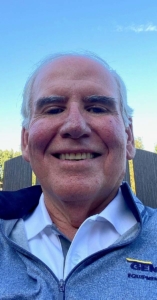Adult Learning & Dealership Development
Adult Learning & Dealership Development
By Floyd Jerkins

With over 35 years in business, Floyd Jerkins is an accomplished senior executive in business development with more than twenty-five years of successful consulting and training experience across various industries. He’s well known for offering specialized services for business development. His is an important voice on the topic of adult learning and dealership development.
Through lifelong learning and having a host of practical experience from a career of developing his own company’s and leading people, his background and passions serve his customers with personalization and excellence. He’s coached and worked intimately with hundreds of business owners and executives to help them achieve more success. Floyd has led large scale project development and execution on an international platform. Today, he’s providing executive coaching services.
www.floydjerkinsexecutivecoaching.com
618.218.1763
Adult Learning & Dealership Development
I’ve often heard that it’s easier to teach a 5th grader than an adult. I’ve never taught a 5th grader other than my kids, but what I’ve experienced first-hand teaching adults isn’t always the easiest.
As a child, we have this interest in nearly everything and are naturally curious. Then we become teenagers and have all the answers. As adults, there is a point where many stop learning about themselves and the ingredients for creating a prosperous career and lifestyle.
Education Creates Predictability
I’ve employed a lot of people in my career. Through my consulting practice, we helped hundreds of businesses with various employee development issues. Nearly every business segment requires knowledge-based workers. These skilled men and women have to learn more because the business and customers are evolving. Each week and year, they accumulate this knowledge through experience and education.
An equipment dealership evolution is relatively predictable. Consolidation is well documented that the volume owners are shrinking, and the size of complexes are getting larger. As you move from a two-store to a 20 store complex, specific policies or procedures change with the organization’s size and scope.
The knowledge and skills required to operate the business at a corporate level are different, but still predictable, based on the roles and responsibilities. Location management and key production roles like sales and parts and service management are easily duplicatable. Well, easy is not always the case. If these folks need to learn more, where do you get this knowledge?
Typically, OEM’s offer training on various topics. When the notice comes in, key managers look across the room to see who they will send. A few training companies in the industry offer workshops for a couple of days on selected subjects. None of these offer a holistic curriculum-based education model similar to what you find at a local college or university. Why not?
Developing Talent and Bench Strength With Holistic Curriculum
Teaching adults always requires the teacher to develop methods to undo past learning experiences. Adults have a way to tune out things they think they already know or are uncomfortable to learn. That’s why at a college standardized testing is used to create reliable comparisons across all the test takers.
As the organization grows in size and scope, developing talent and bench strength should become as predictable as knowing when the next sale will happen. Growing this talent requires planned approaches to measuring what they learn by their roles and responsibilities in the organization.
Learning Without Scars has developed a holistic curriculum pathway for dealership personnel that measures learning. I don’t see this type of “behavioral education” anywhere in the industry. Here are just a few thoughts to consider:
- The curriculum allows a dealership team to be taught the same methodology vs. sending your people to various classes that often require that you undo some of what’s taught to match your dealership.
- The content contains concepts and applications that are proven; it isn’t guesswork.
- Students are assessed before attending a class to know they are in the right class and the proper instruction level. Then they are tested after a class, so you know that learning has taken place.
- Online learning classes that include video instruction is a win-win learning model. Students can access information 24/7 365. Anytime, anywhere so they can learn when they are ready.
- A manager oversees this personal development and knows the test scores to evaluate performance, so there isn’t any guesswork if the learner has learned something.
Many people today want the magic potion to succeed. You can’t take a class and become effective if the teacher or the class material isn’t relevant. It takes real experience and a proven background of success. Ron Slee and Learning Without Scars has been successfully coaching and developing leaders and businesses for 40 years. That’s the facts, and I approve of this message.




